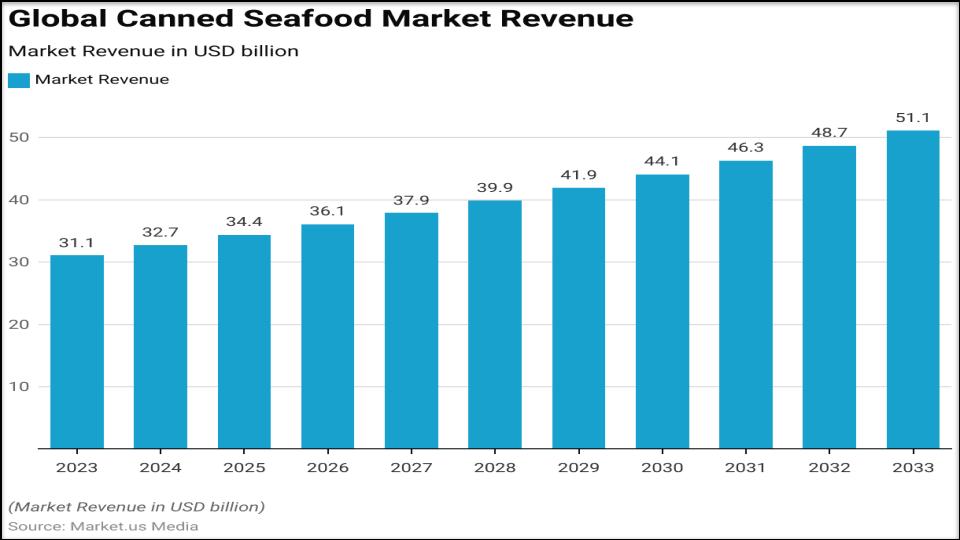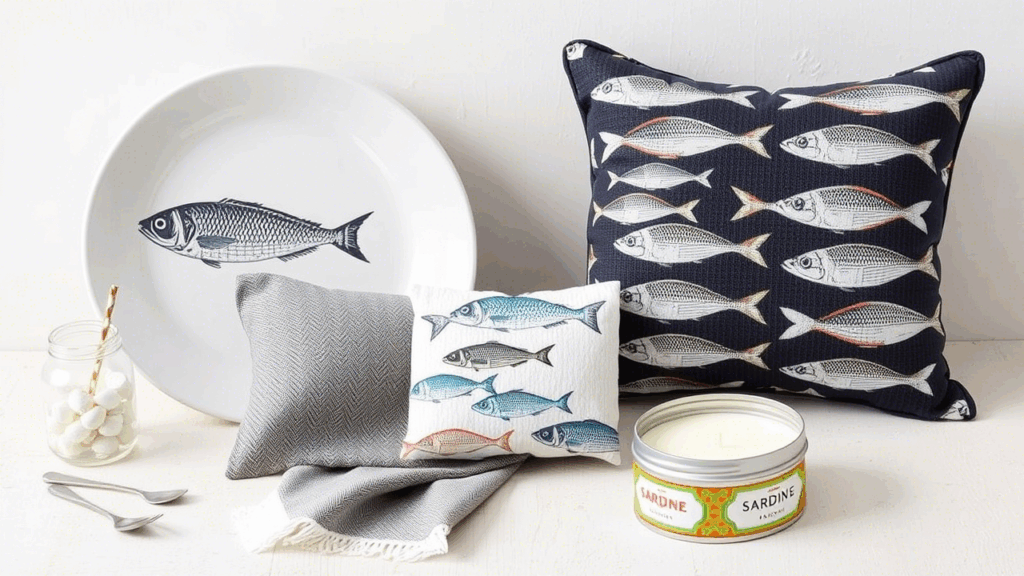A curious new aesthetic has emerged in the home goods market, elevating a pantry staple to a design statement. The sardine decor trend, characterized by motifs of the small, silvery fish, has transitioned from a niche food fad into a significant theme in home interiors for summer 2025. This development reflects a blend of social media influence, economic factors, and a cultural longing for European coastal aesthetics.
The Sardine Decor Phenomenon
| Key Aspect | Detail | Primary Driver |
| Trend Origin | Emerged from the “tinned fish revival” on social media platforms like TikTok, where users celebrated the aesthetics of vintage-style sardine tins. | Social Media & Food Culture |
| Aesthetic Elements | Features imagery of sardines, often in tins, on items like ceramic dishes, textiles, wall art, and candles. The color palette leans heavily on coastal blues, whites, and sunny yellows. | Nostalgia & Kitsch Appeal |
| Market Impact | Major retailers like Anthropologie and World Market, alongside independent Etsy sellers, have released collections of sardine-themed home goods to meet rising consumer demand. | Consumer Demand & Retail Agility |
The Rise of a Fishy Fad: From Internet Joke to Interior Style
The journey of the sardine from a simple, preserved food to a decorative icon began on social media. A “tinned fish revival” gained momentum on TikTok, where users created content not only about consuming tinned seafood but also admiring the often ornate and colorful packaging from heritage brands, particularly those from Portugal and Spain.
This online fascination soon expanded beyond the culinary world. “The sardinecore aesthetic is about channeling that European seaside energy where simple pleasures reign supreme,” noted a report in Green Wedding Shoes, a lifestyle publication that has tracked the trend’s migration from fashion to home decor. The visual appeal of vintage sardine tins provided a ready-made design language for products.
This new wave builds upon recent design movements. It is seen by analysts as a more specific and playful evolution of the “Coastal Grandmother” aesthetic, a style popularized in recent years that emphasizes serene, comfortable, and classic seaside living. While Coastal Grandmother focuses on neutral linens and hydrangeas, the sardine decor trend injects a dose of quirky, Mediterranean-inspired kitsch. According to a market report by promotions agency PPAI Media, the trend offers “escapism in a tin,” providing a connection to a romanticized coastal lifestyle.

Cultural and Economic Drivers of the Marine Motif
Several cultural currents are feeding the popularity of this aesthetic. Experts point to a collective nostalgia for travel and simpler times, with the sardine acting as a symbol of leisurely, sun-drenched European holidays.
The Allure of Affordable Luxury
In an economic climate marked by inflation, the humble sardine has also been positioned as an “affordable luxury.” High-end brands like Fishwife have gained a following with aesthetically pleasing packaging and sustainably sourced products, turning a budget-friendly food into a desirable commodity.
This sentiment has carried over to decor. A report from market research firm Mintel noted that “aesthetically pleasing items are no longer just being designed for capturing a perfect Instagram image, but rather to bring personal joy.” The sardine motif allows consumers to participate in a lighthearted and visually interesting trend without a significant financial outlay. Writing for DTC Newsletter, a marketing publication, one analyst questioned if the trend was an indicator of recessionary pressures, where consumers “turn to affordable ‘luxuries'” when larger ones feel out of reach.
Retailers Respond to a Viral Sensation
The agility of the modern retail market has allowed companies to capitalize on the trend quickly. Retail giants and independent creators alike have launched a variety of sardine-themed products. Home goods retailer Ruggable collaborated with The Original Tinned Fish Candle company on a collection that includes a sardine-printed doormat. Other items seen across the market include embroidered throw pillows, ceramic plates, printed wallpaper, and even beaded clutch purses designed to look like sardine tins.
“Retailers are reeling in the big bucks,” stated the PPAI Media analysis, noting that brands from J. Crew to Anthropologie have embraced the motif. The “Staudine” bag, a beaded purse by the fashion brand Staud, became a viral sensation, with searches for “beaded sardine bag” jumping 300% in May 2025, according to a report in nss g-club.

Expert Analysis: A Fleeting Micro-Trend or Lasting Style?
Trend forecasters are debating the longevity of the sardine’s appeal. As a highly specific “micro-trend” born from a viral internet moment, it risks rapid market saturation and a subsequent decline in interest. Many of these aesthetics, amplified by algorithms on TikTok and Instagram, have a much shorter lifecycle than the broader design movements of the past.
However, its connection to deeper cultural values—nostalgia, the search for joy in small things, and the romanticism of coastal life—may give it more staying power than other fleeting fads. It represents a desire to infuse personality and humor into personal spaces. “Good design doesn’t always have to be serious,” writes an editor for Home & Texture. “Sometimes it’s a sardine tin that sparks joy.”
As the summer season continues, the prevalence of sardine motifs in stores and on social media feeds will determine whether it remains a dominant force in home decor trends 2025 or becomes a memorable, if short-lived, chapter in modern interior design. The trend’s trajectory will offer a case study in how online culture, consumer sentiment, and retail strategy converge in the 21st century.
